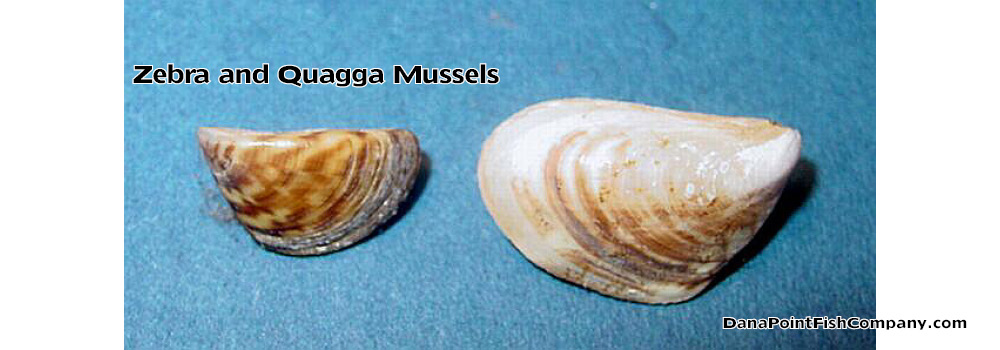by Karlee Deatherage
We all have a lot on our minds these days, and the quality of our water might not be at the top of the list. But Lake Whatcom, the drinking water source for 100,000 Whatcom County residents, including Bellingham, faces an onslaught of threats — from logging and development, to pesticides and invasive mussels hitching rides on uninspected boats.
We’re all acutely aware of the risks of traveling during the pandemic. A big risk to our drinking water, however, has slipped through the cracks as we adjusted to the year’s challenges for travelers.
This year, many of us turned to spending time outside exploring parks, hiking, biking, or boating. A record number of people hauled their boats to visit Lake Whatcom this spring through early fall as documented by the Lake Whatcom Aquatic Invasive Species (AIS) Inspection Program.
This was quite surprising, since many Canadians own property or visit vacation homes near Lake Whatcom, and, as anyone who has visited Bellingham’s Costco or Trader Joe’s knows, the U.S.-Canadian border is closed. Despite this, AIS staff noted record numbers of full boat decontaminations — a requirement for boats that last visited waterbodies infested with zebra or quagga mussels or other invasive species.
Invasive zebra and quagga mussels will cause irreparable harm to Lake Whatcom and cost hundreds of millions of dollars in damage to taxpayer-funded drinking water infrastructure. One single mussel from one boat is able to produce up to one million offspring. While the mussels reproduce and grow, they attach to hard surfaces like docks and boats and clog water intakes. They also can live up to 30 days when out of water.
The coronavirus pandemic delayed the start of the invasive species’ inspections for Lake Whatcom. AIS staff had to rethink how to appropriately conduct boat inspections with the public, understandably causing a delay from mid-April to the second week of May. As a result, people were launching their boats without inspections during some of the nice spring days in April, putting the lake at greater risk of a mussel infestation. We were lucky … this time.
 Although these boaters meant no harm, they can still unintentionally contaminate the lake. This is the very reason we have an AIS inspection program. It would be quite easy to prevent this. That’s why RE Sources is calling on the city of Bellingham to install a gate at the Bloedel Donovan Park boat launch for when boat inspections can’t happen on-site. It’s vital that we close loopholes and improve boat inspection processes to prevent a costly, burdensome blight on our drinking water.
Although these boaters meant no harm, they can still unintentionally contaminate the lake. This is the very reason we have an AIS inspection program. It would be quite easy to prevent this. That’s why RE Sources is calling on the city of Bellingham to install a gate at the Bloedel Donovan Park boat launch for when boat inspections can’t happen on-site. It’s vital that we close loopholes and improve boat inspection processes to prevent a costly, burdensome blight on our drinking water.
Pollution and Lake Whatcom
Invasive species aside, more work must be done to address the other threats Lake Whatcom faces to improve water quality. Pollution in the lake, especially from excess phosphorus, is not improving fast enough. Phosphorus pollution enters the lake from lawns, bare slopes from logging or clearing activities, and failing septic and sewage systems. Excessive phosphorus can cause algal blooms, which can kill fish in the lake when decaying algae sucks up oxygen in the water that fish need to breathe. It can add a foul taste to our tap water, which you might notice in the summer, and make water treatment more expensive over time.
We have a state mandate to reduce phosphorus entering the lake by 3,150 pounds by the year 2066, or 63 pounds per year on average. Yet, according to the recent Lake Whatcom Management Work Plan for 2020-2024, we’ve only reduced an average of 33 pounds per year.
How do we recover the lake at the pace our drinking water needs? Start by allocating more funding to purchase land faster through the Lake Whatcom Land Acquisition program, limiting the amount of pavement for new lots and removal of trees, and improving forest practice activities, on top of the city and county’s existing programs. These existing programs have kept the lake’s health from severely declining; however, additional policy changes are needed to turn up the dial on water quality protection and recovery.
You can join us in calling on our decision makers at the city, county, and state level to take action on Lake Whatcom by signing on to our online petition at re-sources.org/lakewhatcom.
We are asking decision makers to:
1. Reduce the risk of introducing destructive invasive species by closing public boat launch sites with a gate when the inspection program is not operating,
2. (Whatcom County only) contribute funds to the city of Bellingham’s Land Acquisition program,
3. Strengthen Whatcom County’s Lake Whatcom Watershed Overlay to reduce phosphorus pollution by requiring pervious pavement, limits on lawns for new development and some re-development, and no new septic systems,
4. Improve tree protection rules in the county and city land use codes, and 5. Reduce urban sprawl in the Lake Whatcom watershed.
While the coronavirus pandemic has resulted in many hardships and uncomfortable change, we are glad to see people spending more time outside closer to nature. It is our hope that people turning to Lake Whatcom for solace or recreation act as stewards of our drinking water and reach out to our policy makers to increase protections for us all
____________________________.
Karlee Deatherage is the Land & Water Policy Manager for RE Sources. Founded in 1982, RE Sources is a nonprofit organization working to protect the health of northwest Washington’s people and ecosystems through the application of science, education, advocacy, and action.





























